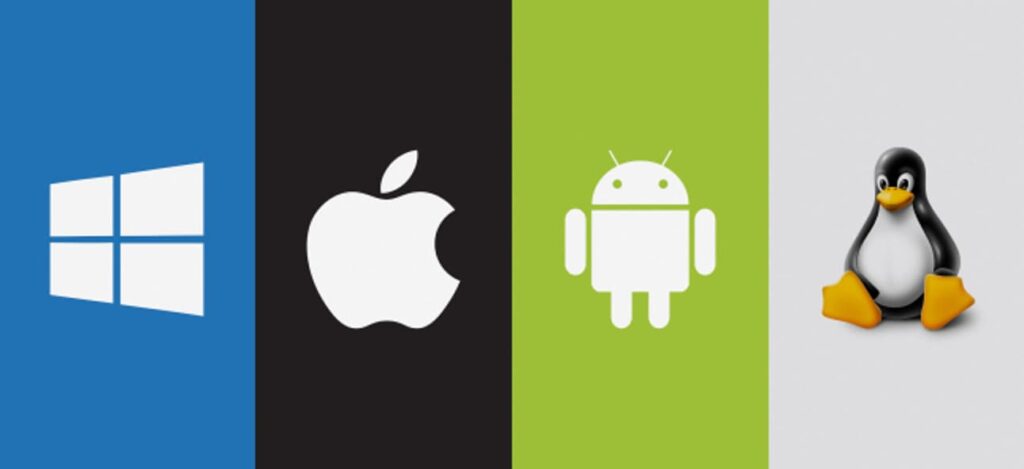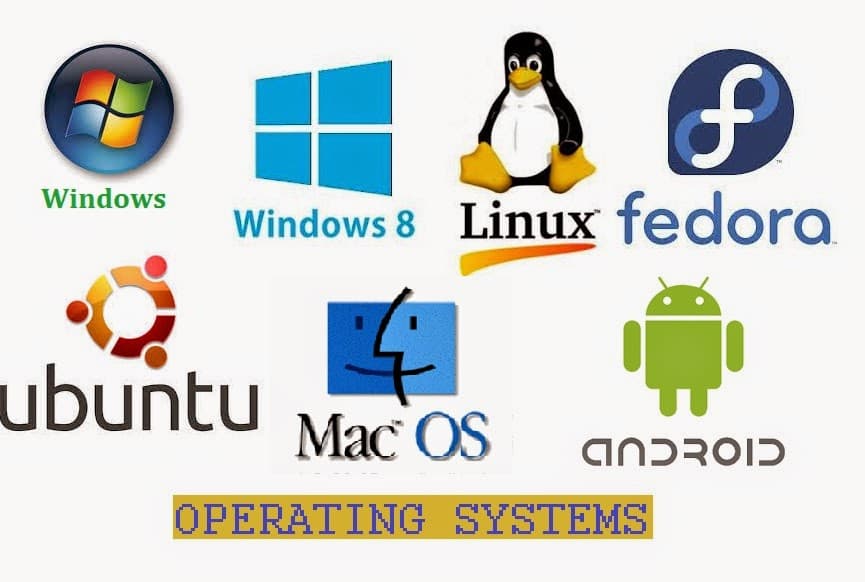An Operating System (OS) is software that manages a computer’s hardware and software resources. It is responsible for basic functions like memory management, process management, and device management, providing a user interface for interactions between the user and the computer.
Main Classification of Operating Systems
The most common classification of OS is divided into the following categories:
- Desktop OS: Examples include Microsoft Windows and macOS, designed for personal computers and daily use. They offer a wide array of applications and a graphical user interface for various tasks, including popular online games like Aviator.
- Server OS: Examples include Windows Server and Linux variants like Ubuntu Server and CentOS, optimized for stable server operation, network resource management, and high-performance under continuous load.
- Mobile OS: Examples include Android and iOS, tailored for smartphones and tablets, focusing on touch interfaces, mobile apps, energy efficiency, and connectivity.
- Embedded OS: Examples include FreeRTOS and VxWorks, used in embedded systems and devices like microcontrollers and automotive electronics, providing minimalistic, reliable, and efficient functionality optimized for specific tasks.
Where are Operating Systems Stored?
Traditionally, OS are stored on hard drives, which are less efficient and durable compared to SSDs, which offer higher reading and writing speeds that can enhance system performance. Recently, there is increasing focus on storing OS on cloud services, where the OS is kept as an image loaded into the computer’s memory during startup. Benefits of cloud storage include:
- Convenience – Users need not worry about storage space.
- Security – The OS is stored in a secure data center.
- Efficiency – The OS can be loaded into memory in just a few seconds.
OS Structure
An operating system typically consists of three main components:
- Kernel: The core component that manages hardware and interfaces with other OS components. Responsible for memory, process, and device management.
- System Calls: Functions provided by the kernel for interacting with the hardware and other OS components. Used by applications to perform tasks like file operations and device interactions.
- User Interface (UI): The means by which a user interacts with the OS, enabling tasks like launching applications and changing system settings.
Examples of OS Structures
- Windows: Kernel – Windows NT, System Calls – Function Library, UI – Graphical User Interface (GUI) and Command Line Interface (CLI).
- macOS: Kernel – Darwin (based on Unix), System Calls – Function Library, UI – GUI.
- Linux: Kernel – Linux, System Calls – Function Library, UI – Can be GUI or CLI.
- Android: Kernel – Linux, System Calls – Function Library, UI – GUI.
Choosing an OS Based on Needs
When selecting an OS, consider the following factors:
- Purpose of the computer use (e.g., gaming or graphic work requires a powerful OS with good support for relevant applications).
- Compatibility with hardware and software – Ensure that the chosen OS is compatible with your computer and the software you plan to use.

The Future of Operating Systems
Recent trends that may affect the future of operating systems include:
- The growing popularity of cloud computing, allowing users to access applications and data over the Internet, which may reduce the demand for local OS.
- The development of artificial intelligence, which can automate tasks currently performed by operating systems, simplifying and enhancing OS efficiency.
- The emergence of new device types (smartwatches, smart speakers) requiring the development of new OS tailored to these devices.
Conclusion
Operating systems are integral to our digital society, ensuring the reliable operation of computers and devices. Their role in managing memory, processes, and devices is essential for modern technology, making their understanding an important step for those looking to deepen their knowledge of information technology. This knowledge becomes a valuable resource for developers, system administrators, and other IT professionals, providing the foundation necessary for successfully navigating technological innovations and challenges in today’s world.
FAQ
1. What is an Operating System (OS)?
An Operating System (OS) is software that manages a computer’s hardware and software resources and provides a user interface for interaction.
2. What are the main types of Operating Systems?
The main types are Desktop OS (e.g., Windows, macOS), Server OS (e.g., Ubuntu Server, CentOS), Mobile OS (e.g., Android, iOS), and Embedded OS (e.g., FreeRTOS, VxWorks).
3. Where are Operating Systems stored?
OS are stored on hard drives, SSDs, or in the cloud, with cloud storage offering convenience, security, and efficiency.
4. What are the main components of an Operating System?
An OS consists of the Kernel, System Calls, and the User Interface (UI).
5. How do I choose the right Operating System for my needs?
Choose an OS based on your intended use, hardware compatibility, and the performance features you need.
